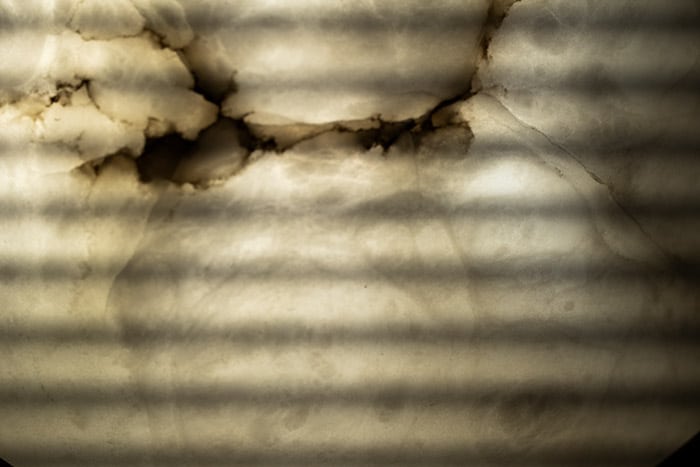This is a continuation of a series of posts on the Sony a7III. You should be able to find all the posts about that camera in the Category List on the right sidebar, below the Articles widget. There’s a drop-down menu there that you can use to get to all the posts in this series; just look for “a7III”.
In the past, I’ve measured the scan time of electronic shutters by photographing an analog oscilloscope trace of the output from a function generator. That was effective, but it took a while to set up and was a difficult experiment for some people to understand. So when I tested the scan time for the a7III this morning, I used a quick-and-dirty method: photographing light from an LED that’s modulated at 120 Hz. I used single shot compressed raw.
Because the light is modulated at 120 Hz, the stripes are 8.33 milliseconds apart. We can count them and see that there are a bit more than seven stripe intervals from the bottom to the top. So, the scan time is a bit over 60 milliseconds or about 1/16 second.
We saw in yesterday’s testing that the precision drops in compressed raw when the shutter is set to continuous high drive mode. That’s a downside, so there must be an upside. Does the shutter scan faster in that mode?
Indeed it does. Now there are a hair over 4 stripes. Call it 35 milliseconds, or 1/28 of a second.
There’s some slop in this measurement technique. I would guess that the scan times would be a factor of two apart, so maybe they’re really 1/15 and 1/30 second.


Leave a Reply